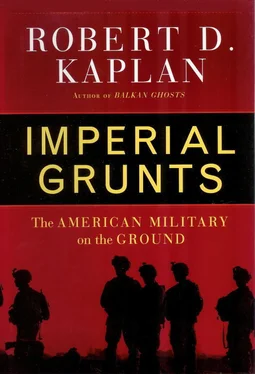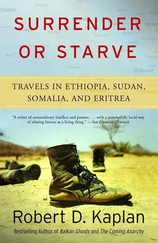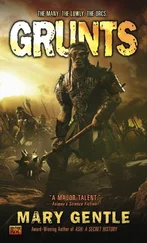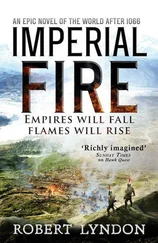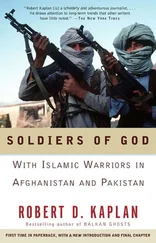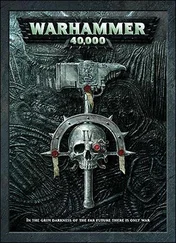28. Ranger Handbook, section 5-11.
29. Ibid., sections 6-19, 6-20.
Chapter 3—PACOM: Mongolia, Spring 2003
1. The main source for historical background in this chapter is René Grousset’s The Empire of the Steppes: A History of Central Asia (1939; reprint, New Brunswick, NJ: Rutgers University Press, 1970).
2. B. Batbayar (Baabar), History of Mongolia (Cambridge, UK: University of Cambridge, Mongolia and Inner Asia Studies Unit, 1999), p. 8.
3. Grousset, Empire of the Steppes, p. xxix.
4. Ibid.
5. Ibid., p. xxiv.
6. Batbayar, History of Mongolia, p. 29.
7. Edward Gibbon, The Decline and Fall of the Roman Empire, vol. 6, 1776–88 (New York: Knopf, 1994), ch. 64, part 3.
8. Grousset, Empire of the Steppes, p. 225.
9. Geoffrey Moorhouse, On the Other Side: A Journey Through Soviet Central Asia (New York: Henry Holt, 1990); mentioned also in my book Eastward to Tartary: Travels in the Balkans, the Middle East, and the Caucasus (New York: Random House, 2000).
10. Gibbon, Decline and Fall of the Roman Empire, vol. 6, ch. 64.
11. Ibid., part 4.
12. Batbayar, History of Mongolia, p. 32.
13. Grousset, Empire of the Steppes, pp. 256–57.
14. Gibbon, Decline and Fall of the Roman Empire, vol. 6, ch. 64, part 4.
15. Grousset, Empire of the Steppes, p. 280.
16. David Lattimore’s 1995 introduction to Owen Lattimore’s The Desert Road to Turkestan (Boston: Little, Brown, 1929).
17. Owen Lattimore, Studies in Frontier History: Collected Papers, 1928–1958 (London: Oxford University Press, 1962), p. 14.
18. See Peter Hopkirk’s chapters on the Mad Baron, and bibliography, in Setting the East Ablaze: Lenin’s Dream of an Empire in Asia (London: Murray, 1984). Also Fitzroy Maclean’s To the Back of Beyond (Boston: Little, Brown, 1975), and Charles Gallenkamp’s Dragon Hunter: Roy Chapman Andrews and the Central Asiatic Expeditions (New York: Viking Penguin, 2001), pp. 123–24.
19. Hopkirk, Setting the East Ablaze (New York: Kodansha, 1995), p. 137.
20. See Gallenkamp’s biography, Dragon Hunter.
21. Byron Farwell, The Gurkhas (New York: Norton, 1990), pp. 12, 51.
22. Roy Chapman Andrews, Across Mongolian Plains: A Naturalist’s Account of China’s “Great Northwest” (Amsterdam, The Netherlands: Fredonia, 2001), pp. 62–63.
23. Barbara W. Tuchman, Stilwell and the American Experience in China, 1911–45 (New York: Macmillan, 1970), p. 185. And it wasn’t only Stilwell who made this observation. So did Owen Lattimore on the first page of Nomads and Commissars: Mongolia Revisited (New York: Oxford University Press, 1962).
24. Peter Fleming, News from Tartary: A Journey from Peking to Kashmir (1936; reprint, Evanston, IL: Northwestern University Press, 1999), p. 18.
25. Gallenkamp, Dragon Hunter, p. 141.
26. Chapman Andrews, Across Mongolian Plains, p. 5.
27. Ibid., p. 8.
28. Lattimore, The Desert Road to Turkestan, p. 101.
29. Tuchman, Stilwell and the American Experience in China, pp. 88–89.
30. Fleming, News from Tartary, p. 252.
31. Ahmed Rashid, Jihad: The Rise of Militant Islam in Central Asia (New Haven, CT: Yale University Press, 2002), p. 95.
32. In addition to Rashid, see Shirin Akiner’s Tajikistan: Disintegration or Reconciliation? (London: Royal Institute of International Affairs, 2001).
33. Lattimore, The Desert Road to Turkestan, p. 149.
34. Chapman Andrews, Across Mongolian Plains, p. 186.
35. Marco Polo, The Travels of Marco Polo (New York: Library Publications), p. 57.
36. Lattimore, Nomads and Commissars, p. 16.
Chapter 4—PACOM: The Philippines, Summer 2003
1. Brian McAllister Linn, Guardians of Empire: The U.S. Army and the Pacific, 1902–1940 (Chapel Hill: University of North Carolina Press, 1997), pp. 51, 65, 68, 73, 115, 185, 248, 253.
2. James Jones, From Here to Eternity (1951; reprint, New York: Delta, 1998), pp. 15–17, 492.
3. GlobalSecurity.org, reprinted in The Atlantic Monthly, July/August 2003.
4. Max Boot, The Savage Wars of Peace: Small Wars and the Rise of American Power (New York: Basic Books, 2002), p. 55. This book offers the best compendium of American imperialist expansion in mainly small seaborne conflicts, as well as much needed revisionism on the wars in the Philippines and Vietnam.
5. Ibid., chs. 2, 3.
6. Stanley Karnow, In Our Image: America’s Empire in the Philippines (New York: Random House, 1989), pp. 12, 119.
7. Brian McAllister Linn, The U.S. Army and Counterinsurgency in the Philippine War, 1899–1902 (Chapel Hill: The University of North Carolina Press, 1989), p. 27; Richard C. Welch, Response to Imperialism: The United States and the Philippine-American War, 1899–1902 (Chapel Hill: University of North Carolina Press, 1979), pp. 133–47.
8. Boot, Savage Wars of Peace, p. 128.
9. Samuel K. Tan, The Filipino-American War, 1899–1913 (Quezon City: University of the Philippines Press, 2002), p. 248.
10. Regarding the details of the war, I have relied heavily on Linn’s The U.S. Army and Counterinsurgency in the Philippine War, as well as on Boot, Karnow, and other sources.
11. Taft Papers, series 21, letter dated July 14, 1900; Linn, The U.S. Army and Counterinsurgency in the Philippine War, p. 22.
12. Linn, The U.S. Army and Counterinsurgency in the Philippine War, p. 46.
13. Ibid., p. 57.
14. Ibid., p. 76.
15. Ibid., p. 85.
16. Ibid., p. 170.
17. Boot, Savage Wars of Peace, p. 125.
18. Karnow, In Our Image, p. 140.
19. Boot, Savage Wars of Peace, p. 127.
20. Karnow, In Our Image, p. 197.
21. Tan, The Filipino-American War, p. 256.
22. Ibid.
23. James Fallows, “A Damaged Culture,” The Atlantic Monthly, November 1987, pp. 49–58.
24. Karnow, In Our Image, p. 14.
25. Thomas McKenna, Muslim Rulers and Rebels: Everyday Politics and Armed Separatism in the Southern Philippines (Berkeley: University of California Press, 1998), pp. 80–81.
26. Ibid., p. 85. Also see Tan, The Filipino-American War, pp. 192, 200.
27. Linn, Guardians of Empire, pp. 35–36.
28. Tan, The Filipino-American War, p. 177.
29. McKenna, Muslim Rulers and Rebels, pp. 43, 44, 104, 112, 143, 144.
30. Raymond Bonner, “Philippine Camps Are Training Al Qaeda’s Allies, Officials Say,” New York Times, May 31, 2003.
31. See Maria A. Ressa’s Seeds of Terror: An Eyewitness Account of Al-Qaeda’s Newest Center of Operations in Southeast Asia (New York: Free Press, 2003).
32. Dana Priest, The Mission: Waging War and Keeping Peace with America’s Military (New York: Norton, 2003), p. 367.
33. A.J. Bacevich, James D. Hallums, Richard H. White, and Thomas F. Young, American Military Policy in Small Wars: The Case of El Salvador (Washington, DC: Pergamon-Brassey’s, 1988), p. 40.
34. Karnow, In Our Image, p. 302.
35. Jones, From Here to Eternity, p. 172.
36. Byron Farwell, Armies of the Raj: From the Great Indian Mutiny to Independence: 1858–1947 (New York: Norton, 1989), pp. 59–60.
37. Niall Ferguson, Empire: The Rise and Demise of the British World Order and the Lessons for Global Power (New York: Basic Books, 2003), p. 136.
Читать дальше
